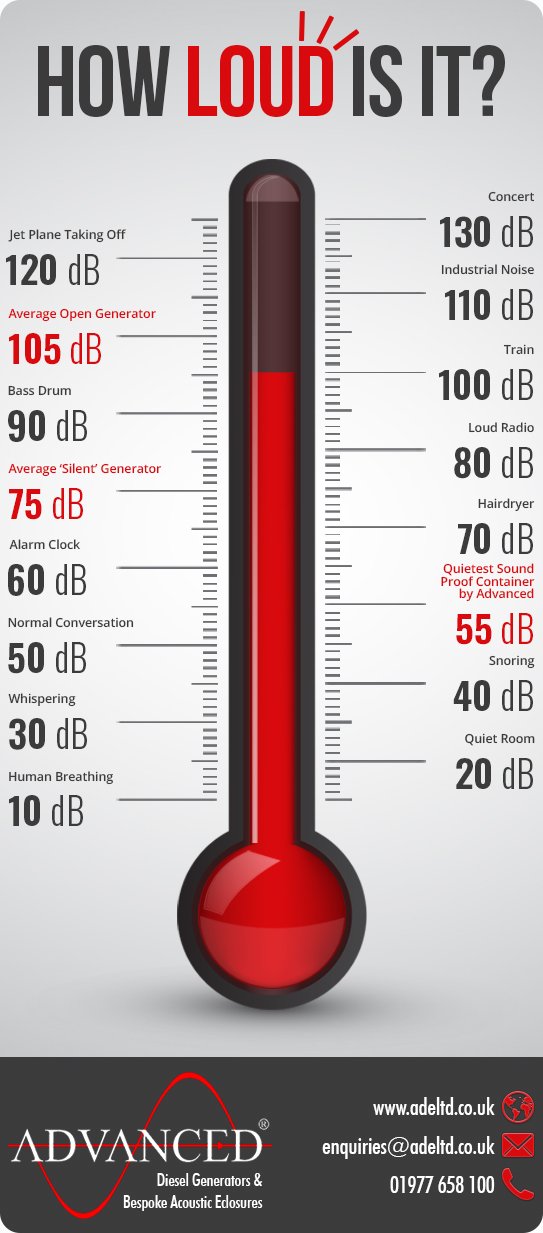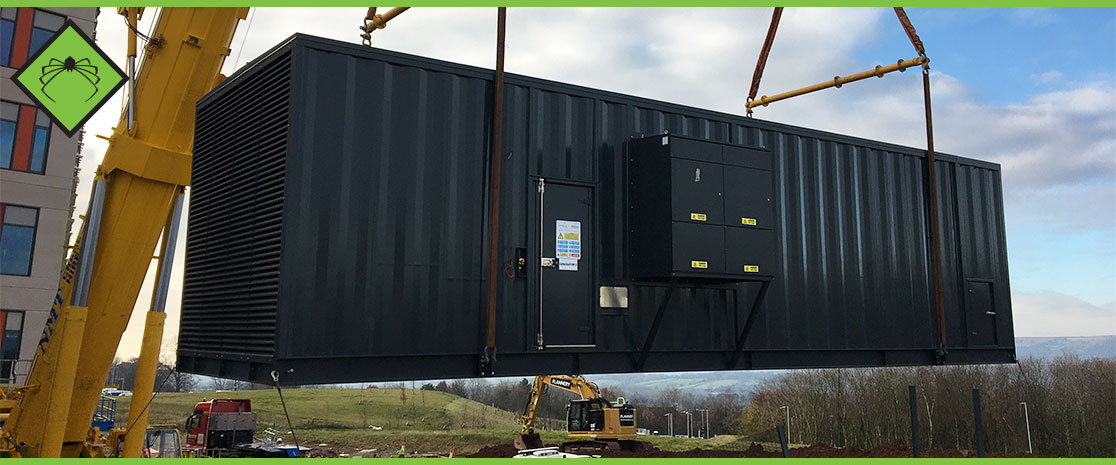Silent / Soundproof Generator Enclosures
Many people have heard of a sound proof generator, sound proof container or silent generator. However, unless you actually work in the industry, few know how they work or what to expect from them.
How a Soundproof Container Works
Generators - especially un-containerised generators - are very loud. So loud that working in proximity to them can cause hearing loss unless protective equipment is worn, and so loud that they present a substantial problem for nearby businesses and passers-by. As a result, laws and regulations have been passed to make sure that any portable or emergency power generators produce only an acceptable level of noise. A silent generator operates inside a soundproof container or generator enclosure which muffles the sound that workers, employees, customers and other members of the public hear.
What Makes Up a Soundproof Generator Enclosure?
Most soundproof containers or silent generators use composite materials in their generator enclosures. These are typically layers of hard material intended to reflect the sound energy back inside the enclosure, as well as layers of soft, porous and resilient materials which actually absorb that sound energy, converting it into heat.
However, different frequencies are absorbed better or worse by different materials. 'Material A' might be excellent at absorbing very high frequencies, but poor at lower ones. 'Material B' might be great at absorbing low to middle frequencies, but rubbish at the high end. That is why most modern sound proof generators use several layers of different material types.
Higher frequency sound is typically absorbed best by highly porous materials which can channel these smaller waves deep into the material, scattering and absorbing them. Lower frequency sound is a very different challenge. These waves are sometimes deflected or absorbed by large, heavy layers of material which is simply resistant to movement, but the best results with lightweight materials come from using an 'air pocket' technique.
Thin panels of material are separated by wide, shallow air gaps. This arrangement uses a resonance effect to make the low frequency sound into a higher, sharper pitch. That higher frequency sound can then be absorbed by porous materials within the air gap itself. The actual materials and layering techniques used depend on the frequency range a generator produces as not all generators are the same.
A generator enclosure should be engineered for a specific class and type of generator - or better yet, a specific model - in order to ensure that the soundproof container is as effective as possible at absorbing the exact range of sound that the gen-set produces.
How is Generator Noise Quantified?

Sound levels generally are measured in decibels (dB). In general terms, anything above 80 dB is 'loud'. Sound levels in the 100-125 dB range are usually considered 'uncomfortable', and actually become painful to most people around 140 dB. The noise that a generator produces can be measured in a linear scale - dB(L) - which weights all frequencies equally, or on an audible scale - dB(A) - which only really takes into account sounds human ears can typically detect, dB(A) is the most useful scale to use for a sound proof container.
How Much Can a Sound Proof Container Reduce the Noise of a Diesel Generator?
Of course, there is a difference between how much noise reduction is theoretically possible and how much is commercially feasible. It is generally considered that a reduction of 40 dB(A) is the upper limit of what is practical for a prefabricated sound proof container. However, if you require a larger reduction, our decades of expertise allows us to make this possible, but the extra cost, weight and difficulty of installation can make this impractical for some applications.
How Can I Find the Best Enclosure to Use With My Generator?
Simply put, talk to our experts! Email us at enquiries@ade-power.com or call us directly on +44 (0) 1977 658 100, and we will be happy to discuss your needs and project requirements in detail. No matter how much power you need or what final sound profile you need to achieve, we can help you find the right products at the right price.
Share this Post
Blog published by ADE Power on May 8, 2018


